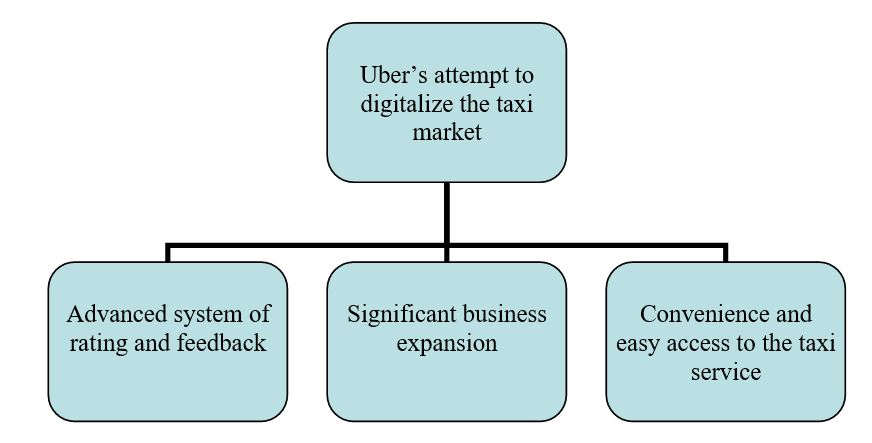Introduction
The case of Uber, the project that has changed the way taxi passengers are transported by, describes how the impact of an innovative approach to organizing a business can change market views on specific goods or services. The introduction of an updated system of interaction between drivers and customers has become a new round in the development of urban transport.
Main body
One of the main drivers of this success for Uber and the globalization of this brand is that in many countries, road transport is not within the scope of federal jurisdiction. This means that owners of such services as Uber can set their individual regulations and take into account the needs of the market in order to offer consumers an innovative project. As a result, the lack of control and stringent restrictions at the highest level leads to the reorganization of market trends and the emergence of new approaches to traditional businesses.
Different carrier companies began to introduce applications and other digital tools for interacting with customers, which indicates a new trend proposed by Uber. In Figure 1, the key outcomes of such a market intervention are presented, which reflect the changes in the whole system of taxi driving.

Conclusion
Updating obsolete principles of interaction with customers is the most effective method. The feedback and rating system proposed by Uber in digital format has contributed to a change in the dynamics of the entire passenger transportation system. Although the project’s creators were not guided by the principle of disruptive innovation, their decision to personalize the taxi service and make it more accessible and convenient had a significant impact on this industry.